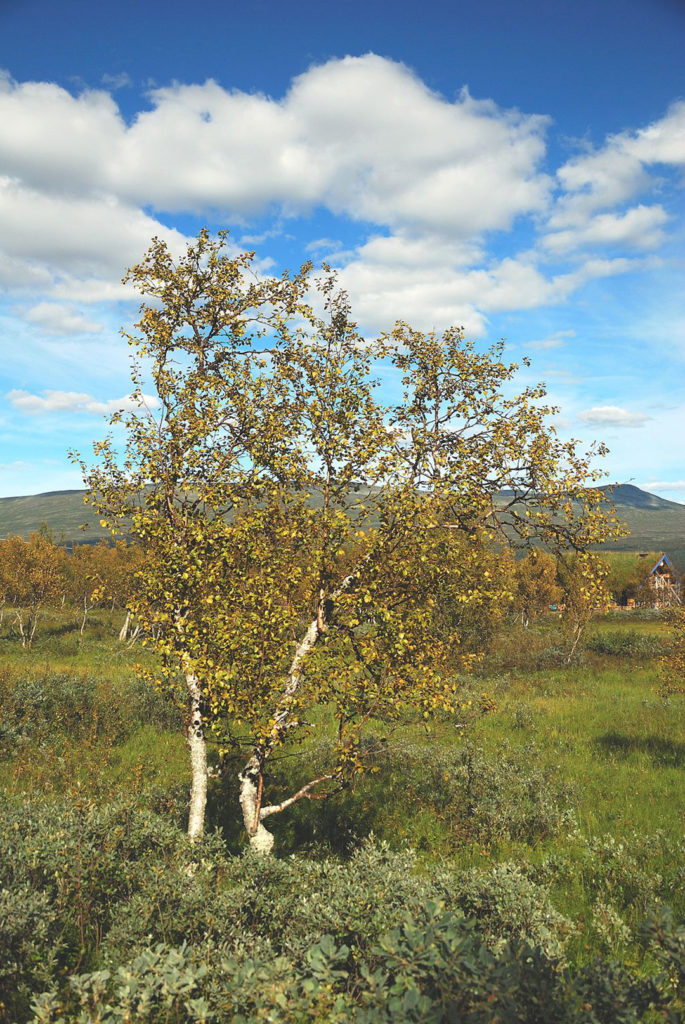
Finland
Birch
Betula verrucosa and Betula pubescens

General Description / Cultural Significance
The birch tree, Betula verrucosa and Betula pubescens, is one of six national nature symbols in Finland. With its light green foliage and bright white trunk, it is a prominent feature of the Finnish summer. Betula verrucosa grows on hard ground and Betula pubescens grows on bogs and flood-prone land. The birch is one of the most common trees in the Finnish forests, along with spruce and pine. The tallest birch in Finland is 32 meters high, and it can live up to 300 years.
In the spring, birch sap is a healthy drink and birch bark is used for roofs and binding. It can also be used to produce baskets, dishes, containers, and shoes. The wood is used to create buildings, furniture, and tools. The twigs are used to create sauna switches and as food for cattle. It is also an excellent source of paper fiber. White birch bark has even been exported, and was found in the tomb of Pharaoh Tutankhamen.
For early Finnish people, the birch tree was sacred. In the days of stoves, the birch was used as firewood. During the 19th century the tree was romanticized through Zacharias Topelius’ fairy tale called “The Birch and the Star.” In the story, two lost children find their home because they recognize the birch tree in their yard. Hundreds of postcards depict a little Finnish girl leaning against a birch tree. Many young Finnish men give their wives birch tree bark rings upon engagement, before giving them real ones.
Climate Change/Conservation Status
In general, Finland’s forests are under threat by drought and increased velocity of wind. The birch may be the most resilient in the forest when it comes to wind, but rising temperatures, particularly in the winter months, are predicted to increase the birch trees’ susceptibility to defoliation insects whose ranges are extended by the warming, bringing it too under threat. The IUCN currently lists Betula verrucosa as a species of Least Concern in spite of this threat. Another potential threat to the species is that there is little genetic diversity in the regions where they grow. Betula pubescens is similarly considered a species of Least Concern, but the IUCN reports that rising temperatures may compromise the species should areas become less suitable for its survival.
As far as rising temperatures, the Finnish government has aimed to achieve carbon neutrality by 2035. In 2021, Finnish greenhouse gases declined. However, in order to achieve their goal, a significantly larger amount of emissions decline will be required across all sectors, including agriculture, which hasn’t made that many changes yet.
Alternate Names
Downy birch
European white birch
Moor birch

